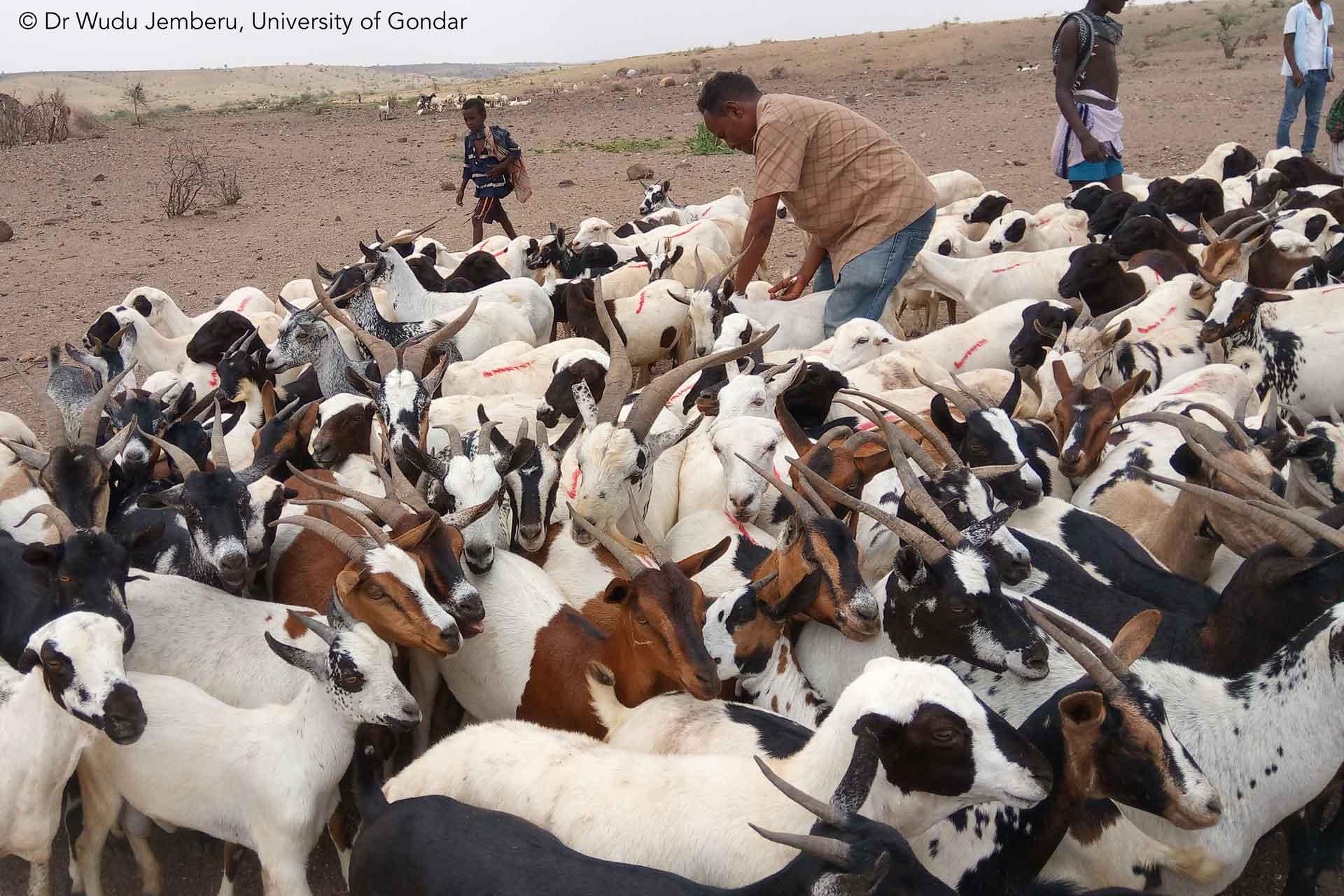A study led by The Pirbright Institute has created the first framework for determining the true cost of peste des petits ruminants (PPR) vaccine campaigns based on case studies in Ethiopia. PPR, also known as goat plague, is a contagious viral disease of sheep and goats which has severe socio-economic impacts on farmers with affected flocks across large parts of Africa and Asia. The new approach to cost estimation is important for the Global Control and Eradication Strategy launched by the Food and Agriculture Organization (FAO) and the World Organisation for Animal Health (OIE).
Dr Nick Lyons, lead author and Research Fellow at Pirbright said: “Many systems that estimate the cost of disease control strategies only factor in a small portion of the farmers outlay whereas in reality there are far more variables to consider. For example, previous vaccination cost estimates might only account for the cost of the vaccine and veterinary administration, but not other factors such as transport, travel and marketing. This study helps us to estimate how much vaccines cost in real terms to farmers, and identifies barriers to vaccine uptake”.
Using the new framework, the team discovered that the total cost of each vaccine dose was about 2.5 times more expensive than previously estimated, averaging USD$0.15 per dose. They also found that the overall cost of vaccination varied depending on the type of farming system. Farmers who had mixed livestock and crop farms effectively paid double the price for each vaccine dose compared to farmers that purely reared livestock. In addition, vaccine wastage from missed shots was identified as a significant issue, reaching up to 33% in some cases.
To establish their framework, the researchers followed four PPR vaccination campaigns in Ethiopia to understand their financial impact at a local level. The team took into account practical costs such as vaccine dose price, vaccine transport and storage, and vaccine administration in the field. They also analysed more abstract costs like the price of farmer’s time to attend the vaccination, co-ordination of the vaccination campaign, publicity and mobilisation costs and vaccine wastage.
Identifying these ‘unseen’ costs has generated a more accurate estimation of vaccine price for farmers and indicates what could influence their willingness to participate in campaigns. This new information could have an important impact on national and global cost estimates for PPR vaccination, and aid in making new and existing strategies more efficient. However, the framework itself is not limited to PPR; the methods outlined in Preventative Veterinary Medicine can be applied to vaccination campaigns for multiple infectious livestock diseases across many countries.
“Vaccination is a major component of disease control, but unlike human diseases, livestock estimations for vaccine costs are hampered by the lack of reliable information and are therefore almost always based on assumptions and not on actual field data collected in a verifiable, objective way”, said Dr Lyons. "We hope that modelling this framework on evidence gathered in Ethiopia will make future assessments of livestock vaccine campaigns more reliable so we can work towards reducing costs and increasing efficiency, ultimately resulting in better disease prevention.”
This vital research was undertaken by scientists at Pirbright, the FAO office in Ethiopia, the University of Gondar in Ethiopia and the Institute of Infection and Global Health at the University of Liverpool, and was supported by GALVmed with funding from the Bill & Melinda Gates Foundation and the UK Government.
